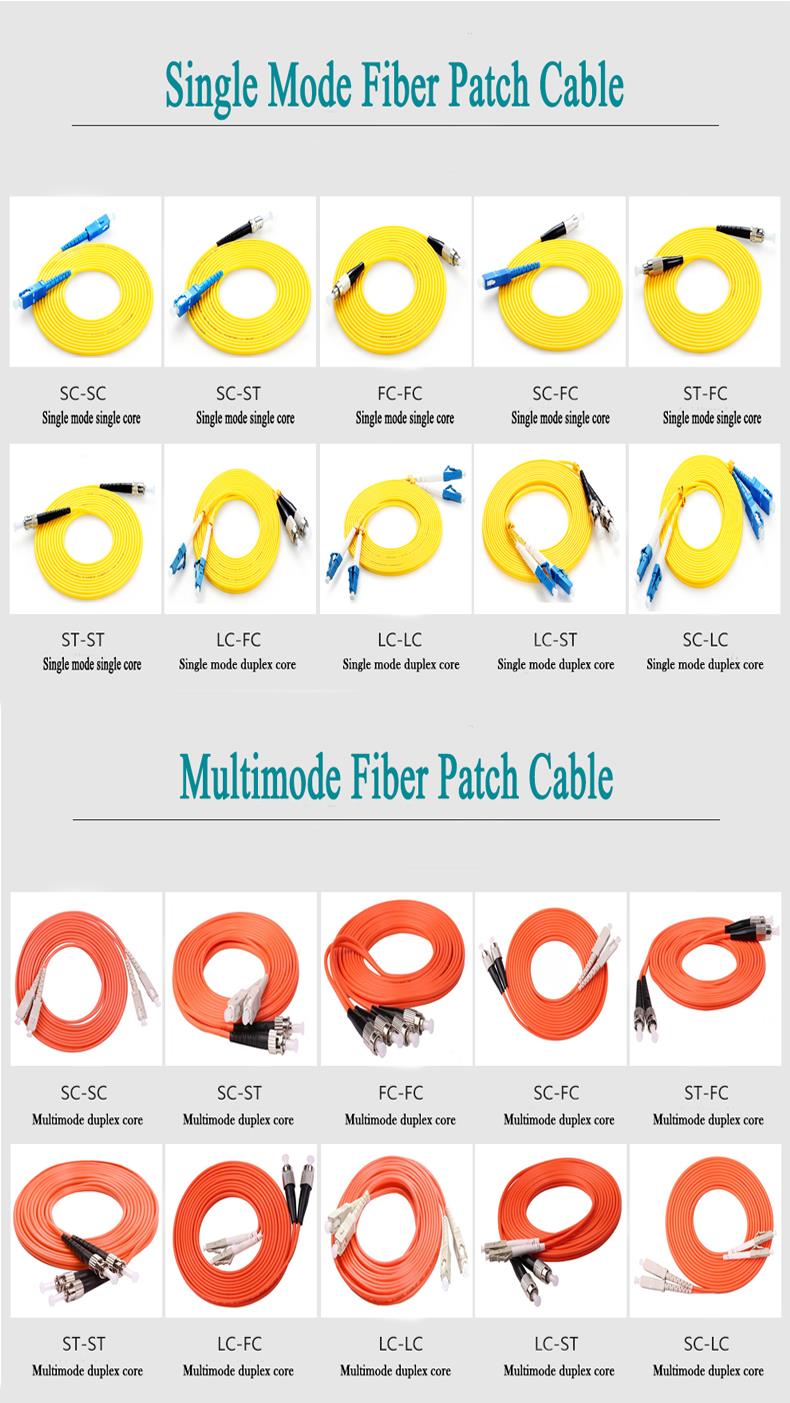Mode Conditioning Patch Cord utilized in Gigabit Ethernet
Fiber optic patch cord is used to link different equipment components in a network, typically switch to switch connections, where fast efficient communication is needed. It may be terminated having a a few different connectors depending of the equipment requirements.
Fiber patch cords are occasionally called fiber jumpers and therefore are basically a length of fiber optic cable terminated with a suitable connector for the required installation. As previously described, fiber patch cables are commonly fitted with ST, SC, LC or MTRJ connectors. There are lots of types of fiber patch cords for different use. This article is about Mode Conditioning Patch Cord.
Mode Conditioning Patch Cords, also referred to as conditioned launch fiber cables, are utilized specifically in Gigabit Ethernet 1000Base-LX/LH applications where the objective is deploying new high-speed 1000Base-LX routers, switches, or optical transceivers within existing multimode system backbones. Mode conditioning patch cables are used in the 1300nm or 1310nm optical wavelength window, and cannot be utilized for 850nm short wavelength window such as 1000Base-SX. Also, any attempt to connect 1000Base-LX/LH equipment over short distances of multimode fiber without the use of mode conditioning fiber can lead to a higher bit error rate, and finally damage to the unit. Mode conditioning patch cord is made for Gigabit Ethernet multi-mode applications at 1300nm wavelength; the applying standard is IEEE 802.3z. All mode conditioning fiber optic patch cords are made with duplex cable; with a single mode to multi-mode offset fiber connection part in one of the two legs.

Mode Conditioning Patch Cord
Why do we need to use mode conditioning patch cable? The Gigabit Ethernet application standard requires the use of fiber optic light to offer the specified data transmitting rates. Usually people use long wave transceiver modules for Gigabit Ethernet. These modules have to operate both single mode and multi mode fibers. And as we all know, multi-mode fiber manufacturing techniques create index of refraction anomalies along the centerline of the multi-mode fiber core. When a highly concentrated single mode fiber optic light is sent into the center of the multi-mode fiberglass, the modes that propagate through the index of refraction anomalies disseminate over time causing modal dispersion. This effect is called differential mode delay. Differential mode delay results in reduced bandwidth over distance. By permitting the only mode laser launch to become offset from the center of the multi-mode fiber, the mode conditioning patch cord cuts down on the effect of such differential mode delay.
From the above descriptions we learn how to use such mode conditioning cables. When we use such mode conditioning fiber optic patch cords, we have to connect the yellow leg the colour of single mode to connect the transmit side from the equipment (single mode Gigabit transceiver) while we connect the orange leg the colour of multimode to the receive side (multimode Gigabit cable plant) .
Mode conditioning cables are usually utilized in pairs. This means that you will need a mode conditioning patch cable at each end to connect the gear towards the cable plant. So then these cables are usually ordered in even numbers. The typical reason someone may order one cable is so they may keep it as a spare. In case your gigabit LX switch comes with SC or LC connectors, make sure to connect the yellow leg (singlemode) from the cable towards the transmit side, and also the orange leg (multimode) towards the receive side of the equipment. It’s imperative this configuration be maintained on both ends. The swap of transmit and receive only works in the cable plant side. Mode conditioning fiber optic patch cord are utilized typically when you wish to run Gigabit Ethernet (LX) over some multi-mode fiber optic plant.
In FOCC, mode conditioning cables are compliant with IEEE 802.3Z standard. FOCC supplies mode conditioning patch cables with SC, ST, LC, MTRJ fiber optic connectors.
